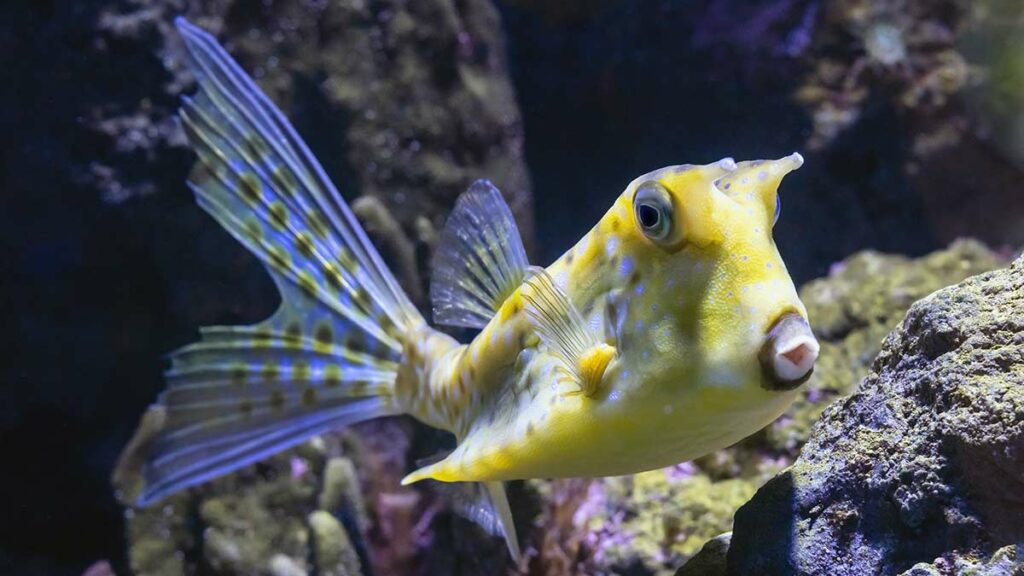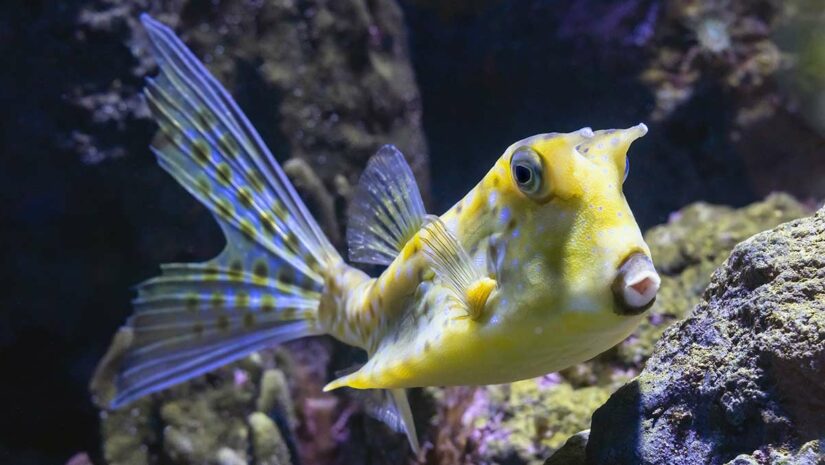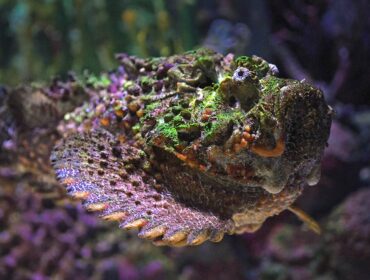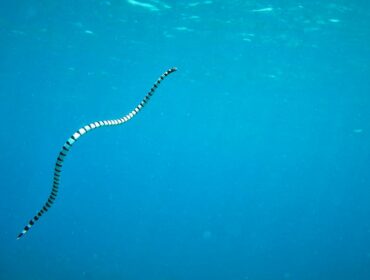Boxfish are indeed a peculiar family of fish, often seen in reefs waddling side to side and not seeming to get anywhere fast. The comical looking boxfish family comprises of squared bony fish that have a more hexagonal skeleton structure that move by rowing side to side adding to their comical appearance. Members of the boxfish family include Cowfish, Trunkfish, and Cofferfish all of whom are closely related to the porcupine fish and pufferfish family.
The boxfishes cube shaped body is covered with a hard bony armor that provides excellent protection for these slow swimming fishes. Additionally they are also able to secrete a deadly toxin from their skin when they are in danger, which poisons the surrounding water protecting them from predators.
They can be found mainly near coral reefs in the Indian Ocean, Pacific Ocean and in the southern Atlantic where they feed on algae, mollusks, and crustaceans.

Longhorn Cowfish
Longhorn Cowfish are instantly recognizable members of the boxfish family owing to their yellow appearance and elongated ’horns’ that protrude from the front of its head rather like a cow or a bull. The Cowfish survives off sponges, molluscs and worms that it uncovers from the sandy substrate by blowing jets of water into the sand.
Spotted Trunkfish
Another instantly recognizable boxfish that gets its name from the black spots it has covered over its yellow/golden body which grows to 15 to 30 cm (6 to 12 in) in length. Spotted trunkfish are shy but curious fish that swim slowly above reefs and like all box-fish live in shallower waters and in protected lagoons or areas of less current. Trunkfish are protected by a bony outer surface that acts as body armor and has two sharp spines guarding their rear fins. Additionally, trunkfish secrete a colorless ciguatera toxin from glands on its skin when touched. The toxic is only dangerous when ingested, so there’s no immediate harm to divers, however predators of the trunkfish often end-up dead after ingesting this toxin.
Boxfish seldom do well raised in captivity, but surprisingly there is high demand from aquarists to keep various kinds of boxfish in their marine tanks. Strangely enough the Boxfish if stressed or spooked in a fish tank will secrete its toxin often poisoning everything in the tank including itself, as it has no place to run. This has nicknamed the boxfish the “neutron bomb” by aquarists who despite this fact continue to keep boxfish in captivity. The best place for viewing boxfish is in its natural environment as a scuba diver, where we guarantee you will smile when you see these comical fish struggling to swim or rather waddle away from you.






